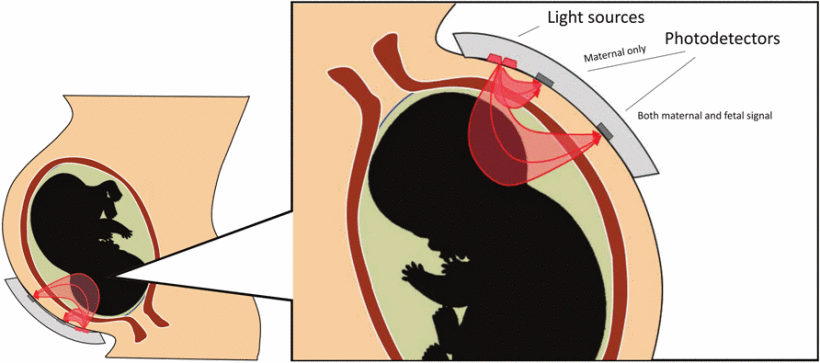
Abstract
Current technology used for monitoring fetal well-being has been ineffective at reducing rates of harm to the fetus during the intrapartum period, yet its adoption has significantly increased the number of emergency C-sections performed. Transabdominal fetal pulse oximetry (TFO) aims to reduce the number of surgical interventions through non-invasive measurements of fetal oxygen saturation. When developing an optode for TFO, it is important to select design parameters that will maximize the measurement of the fetal signal. In this paper, we optimize the source-detector distance and wavelengths through Monte Carlo simulations using a multi-layered tissue model for various fetal depths. The results were validated by developing an optical probe with two wavelengths of light to observe pulsating arterial tissue through an optical phantom that mimics the maternal abdomen as a step towards oximetry. Our results show that 735nm and 850nm seem to be the optimal selection of peak wavelengths of light sources to obtain a stronger fetal signal for the fetal depths between 2-5 cm. Improving the signal sensitivity is approached by increasing the spacing between the source and detector, and is limited by the noise-equivalent power of the detector.